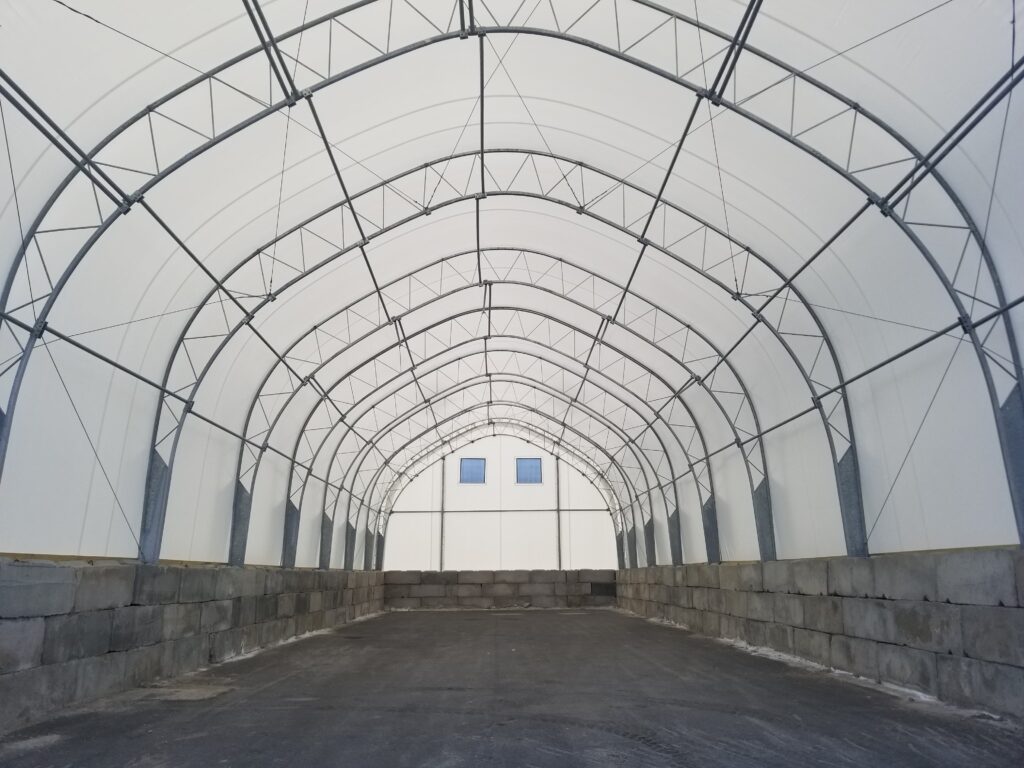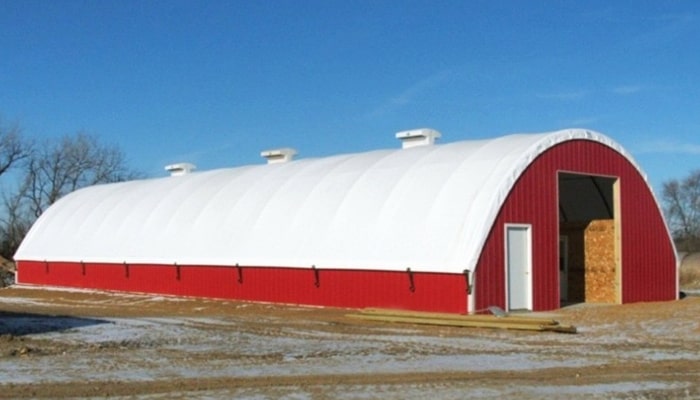Hoop buildings have become increasingly popular over the years due to the many advantages that they offer. They are often used as storage sheds, workshops, animal shelters, greenhouses, and more. In this article, we will cover everything you need to know about hoop buildings, including what they are, how they are constructed, their benefits, and potential drawbacks.
Hoop buildings are lightweight structures that feature flexible frameworks made up of metal or PVC pipes shaped like arches. These arches are then anchored to the ground using concrete, water, or sand-filled bases. The covering material is typically a heavy-duty, polyethylene plastic material, which is what gives the structure its hoop-like shape.
Hoop buildings are known by many other names, such as hoop barns, hay sheds, arena buildings, fabric buildings, tension fabric structures, and more. They are often used for agricultural, commercial, and industrial purposes. However, given their affordability and versatility, they also make excellent personal storage or workshop space.
How are Hoop Buildings Constructed?
Hoop buildings are designed to be assembled quickly and efficiently with minimal labor and equipment. It is possible to build a hoop building without professional assistance. Most hoop-building kits come with comprehensive assembly instructions, and online resources can provide helpful video tutorials.
Hoop buildings are essentially built around a hoop or arch-like framework. Metal or PVC pipes, often made from galvanized steel, are bent into shape using specialized benders. The pipes are then attached at the base by anchoring them into concrete or filling them up with water or sand. The covering material is typically secured using straps at the base and grommets on the sides.
The covering material, usually made from heavy-duty polyethylene, is UV-protected, which makes it resilient to harsh weather conditions. Depending on the application, a hoop building may also be fitted with roll-up doors, vents, skylights, and other accessories.
Benefits of Hoop Buildings
Hoop buildings are a popular choice for homeowners, farmers, and businesses due to their many benefits. Some of the most notable advantages are:
Affordable: Hoop buildings are a low-cost alternative to traditional brick-and-mortar structures. They are also more affordable than alternative materials such as wood, concrete, or steel. The low cost of a hoop building means that many people can afford to have a large, multi-purpose building without breaking the bank.
Versatile: Hoop buildings are highly versatile. They can be used for storage, animal shelters, greenhouses, workshops, and more. The hoops themselves can be reconfigured, and the covering material can be removed or replaced, making them perfect for multi-purpose use.
Easy to Assemble: Unlike traditional structures, hoop buildings are easy to assemble. They require no special skills or tools, and as mentioned earlier, anyone can assemble one with minimal assistance. This makes them an excellent choice for DIY enthusiasts or for individuals who wish to save on labor costs.
Durable: Due to the strength of the polyethylene material used in the covering, these structures can withstand extreme weather conditions, including hailstorms, heavy winds, and snow. Moreover, the plastic material is not susceptible to rot, rust, or corrosion, which results in a long lifespan.
Environmentally Friendly: Hoop buildings are environmentally friendly because they use fewer resources, such as energy-consuming materials and transportation costs. Additionally, the frame materials are often made from recyclable materials, making them a more sustainable choice.
Potential Drawbacks of Hoop Buildings
As with any construction material, there are potential drawbacks that should be considered when selecting a hoop building. Some of these drawbacks include:
Limited Design Flexibility: Hoop buildings have a recognizable design, and although there are various sizes and shapes available, they may not fit into all landscapes or reflect a unique aesthetic vision. Therefore, some people may opt for more traditional building methods if design flexibility is essential.
Wind Resistance: Hoop buildings are designed to withstand strong winds, but they may not be as secure in tornadoes or hurricanes. Therefore, they may not be suitable for areas with high wind intensities.
Heating and Cooling: Depending on the intended use of the structure, heating, and cooling may pose a challenge. The plastic material is not known for its insulating properties, and heating or cooling may require additional expense or specialty equipment.
Conclusion:
Hoop buildings have emerged as a cost-effective, versatile, and durable alternative to traditional brick-and-mortar structures. They are ideal for homeowners, farmers, and businesses that need affordable storage space or shelter. While they do have some potential drawbacks, the benefits far outweigh the negatives. With their simple design and quick assembly, hoop buildings can provide a significant solution to your building requirements.



